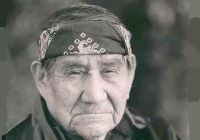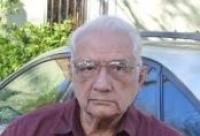
BARBARA AND JOSEPH CERNO
Barbara (Hopi) b. 1951 Joseph (Acoma) b. 1947
Barbara Hayah Cerno was born October 20, 1951 and Merle Joseph Cerno was born January 30, 1947. They are a husband and wife pottery-making team. They have been making traditional Acoma pottery since their late teens... well over 50 years. Their pots are made from traditional materials, hand-coiled and fired outdoors and reflect the traditional aesthetics of their ancestors.
Barbara’s mother, Esther Gunn Hayah, was of Acoma Pueblo and Barbara’s father, William David Hayah, was of the Hopi village of Polacca. Barbara and Joseph both learned pottery making techniques from his Acoma mother, Santana Cimmeron Cerno who was winning prizes for her pottery during the 1920's, the early years of Santa Fe Indian Market; after their marriage, Barbara did too.
From an early age, Joseph Cerno showed an interest in the designs and shapes of old Acoma pottery. He studied photographs in books and magazines and has accumulated an extensive reference library. Even though he studied with his mother Joseph is essentially a self-taught artist who has spent many hours of trial-and-error in learning how to properly prepare the clay, the natural paints, and the many skills involved with traditional firing. Barbara Cerno descends from a long line of Hopi artists, both potters and kachina carvers.
In 1969, Barbara and Joseph made their first pottery. They started with miniatures, then created larger and larger pots. In 1971, they won their first of a long list of awards—1st Prize in the Inter-Tribal Indian Ceremonial in Gallup, NM. Known especially for their large ollas, they have been top award-winning artists for decades.
The Cerno's have won awards at every major Southwest Pottery show including:
Inter-tribal Ceremonial in Gallup, New Mexico, Santa Fe Indian Market, The Gallup Ceremonials, The New Mexico State Fair. Their awards have continued pouring in and are too numerous to post here.
They have demonstrated their talents at the Heard Museum in Phoenix, the Inter-Tribal Indian Ceremonial in Gallup and at Indian Market in Santa Fe.
The Cerno's are considered among the finest living Acoma potters today. Their pottery is extremely
thin walled (which is a major part of the challenge for many Native American potters). The result
of that is a wonderful ring that seems to last forever when you gently tap it. The designs are very well balanced and executed and are based upon ancient Mimbres pottery designs and classic Acoma designs incorporating parrots and florals... simply beautiful works of Acoma pottery. It should be noted too that the Cernos never mass produce their pottery but rather focus on each pot as a work of art. These are collectible pots by every measure of that endeavor.
The Cernos specialize in traditional Acoma pottery using Mother Earth to make their pottery. They have studied the ancient pottery shards found within many ruins in the pueblo, so they keep within the traditional styles of their ancestors. They have dedicated many hours of trial and error to perfect the skill and artistry necessary to make quality pottery. Joseph and Barbara are widely recognized as the creators of pottery products which truly reflect the traditional style of their Indian ancestors.
Meticulous about keeping to traditional materials and methods, Joseph forms the thin-walled pots after aging the hand-made clay for a minimum of 6 months. The pots then dry for several months more before they are fired in a hand-dug pit. Barbara does the flawless painting, using natural mineral and vegetal colors. For inspiration, they often consult reference books of historic pottery designs. As collectors and museums around the world will attest, this blue-ribbon team excels.
Once in a while, Barbara or Joseph will produce an individually created piece, most often a seed pot.
Barbara and Joe Cerno sign their pottery B. J. Cerno. There is now a Joseph Cerno, Jr. who is following in the footsteps of his parents.
According to author Gregory Schaaf, Barbara & Joseph Cerno "are a husband and wife pottery making team that has created some of the largest and finest traditional polychrome ollas in the Pueblo world. They use natural clay, mineral and vegetal paints and fire their pottery outdoors. They are well-recognized masters, honored as top award winners." Schaaf, Southern Pueblo Pottery.










